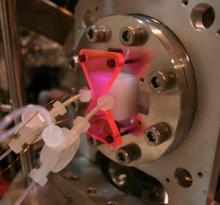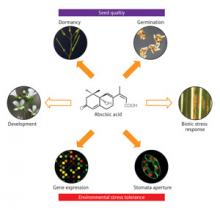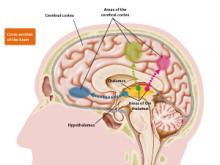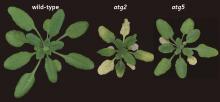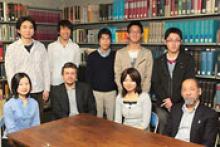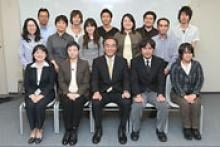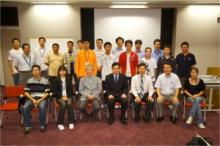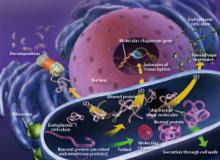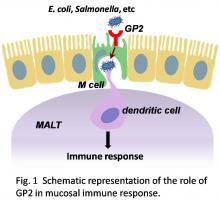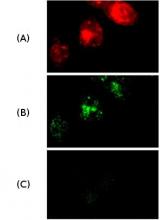Japan
News

07 Dec 2009
Never Lose Fighting Spirit
04 Dec 2009
First-ever observation of electronic states in aqueous acetic acid reveals water’s unexpected influence
04 Dec 2009
The plant hormone abscisic acid makes use of a surprisingly elegant and straightforward system to regulate its many essential functions

30 Nov 2009
Robert D. Hormats, Under Secretary of State for Economic, Energy and Agricultural Affairs(USA), delivers a lecture at Waseda university.

27 Nov 2009
As part of plans to launch its new Drug-discovery Technology Program in 2010, RIKEN is making its life sciences technology infrastructure available to outside users on a trial basis to facilitate drug-discovery research and development. The new program will be headed by Toshio Goto, currently a senior advisor of RIKEN.
27 Nov 2009
Gene expression studies shed light on how the brain develops in the fetus and how new areas of the brain may evolve
27 Nov 2009
Internal degradation within plant cells and their response to aging and disease are linked
25 Nov 2009
Good, Right - What does that mean?
We discuss fundamental issues of Ethics and Social Philosophy both in Japanese and English. In our seminars, we have two seniors, three juniors, and three graduate students.

23 Nov 2009
With its history as a city since the Edo Period, the Tokyo metropolitan Yamanote area on the eastern edge of the Musashino Plateau comprises terrain with plateaus, valleys, and an intricate network of streams and rivers, such as the Kanda River, that erode the plateau.

23 Nov 2009
The mass media cover the issue of Japan Airlines (JAL) reconstruction nearly every day. It would be a mistake to regard this as simply an issue of management at one corporation. It is, in fact, a significant issue which involves airline administration and airport administration, and which also affects transportation policy as a whole.

20 Nov 2009
On October 9, 2009, the Japanese Ministry of Education, Culture, Sports, Science and Technology (MEXT) and the RIKEN Center of Research Network for Infectious Diseases (CRNID) held a one-day symposium entitled “Building an Africa-Asia Knowledge Network on Infectious Diseases” at the Marunouchi Building in Tokyo.
20 Nov 2009
Surprising complexity underlies the seemingly simple process of chromosome pair separation during cell division

20 Nov 2009
A fluorescent sensor helps scientists track specific chromosomal modifications that can alter gene activity
18 Nov 2009
With the aim, 'Promote developing excellent medicines, and quickly deliver them to patients all over the world' (ICH mission), we conduct various researches regarding new medicine development.

18 Nov 2009
Challenger Series tournament (international men’s tournament) organized by students to be held
13 Nov 2009
The RIKEN Nishina Center for Accelerator Based Science held its second annual Nishina School between September 29 and October 8, 2009.
13 Nov 2009
Visualization of stress in the cell’s protein factory, the endoplasmic reticulum, may lead to new treatments for many debilitating diseases

13 Nov 2009
Experiments simulating zero-gravity conditions reveal developmental difficulties arising from mammalian reproduction in space
11 Nov 2009
Press Release - A key mechanism involved in immune surveillance in the intestinal system is described by a team of researchers at RIKEN and Yokohama City University. Their research will appear in Nature on 12 November and could provide new targets for oral vaccines for infectious diseases and allergies.

11 Nov 2009
Special Talk by George W. Bush, 43rd President of the United States of America at Waseda University.
09 Nov 2009
Press Release - In a paper to appear in Nature Neuroscience, researchers at the RIKEN Brain Science Institute challenge conventional thinking on neuron function and shed light on the mechanisms governing self-initiated voluntary movement.
06 Nov 2009
A new preparation method promises to bring a challenging but clinically important subset of proteins within easier reach of scientists

06 Nov 2009
The daily rhythm of mammals is maintained by a key molecular process that is unaffected by changes in ambient temperature

06 Nov 2009
New Scholarship Program Established with Ting Hsin International Group

06 Nov 2009
This time, I would like to reflect on the significance of modern literary study by focusing on the appeal of Crime and Punishment, which was written nearly 150 years ago.

06 Nov 2009
Since high school, I was a precocious student who studied very keenly the subjects I was interested in, but felt that school lessons were too easy, and boring. I read piles of books, thinking to myself, “I want to be a writer,” and studied German passionately.

30 Oct 2009
A new supercomputer developed at RIKEN has set a new record for computing performance by effectively harnessing the parallel processing power of computer clusters.

30 Oct 2009
‘On–off’ fluorescent probes allow multicolor detection of nucleic acid strands within living cells

30 Oct 2009
High-energy proton collisions help solve the puzzle of what determines the proton’s spin
27 Oct 2009
Press Release - Researchers at the University of Alabama at Birmingham and RIKEN has identified the gene encoding the receptor for immunoglobulin M (IgM), a class of antibody that appears first in immune response. The landmark finding promises advances in our understanding of early immune response and in the treatment of immunological diseases.
Researchers
Sorry, no researchers coming up for this topic.
Giants in history
Ruby Sakae Hirose (1904 – 1960) was a Japanese-American scientist whose research contributed significantly to our understanding of blood clotting, allergies and cancer.
Haisako Koyama (1916 – 1997) was a Japanese solar observer whose dedication to recording sunspots – cooler parts of the sun’s surface that appear dark – produced a sunspot record of historic importance.
Michiaki Takahashi (17 February 1928 – 16 December 2013) was a Japanese virologist who developed the first chickenpox vaccine.
Toshiko Yuasa (11 December 1909 – 1 February 1980) was the first Japanese female physicist whose research on radioactivity shed light on beta decay – the process in which an atom emits a beta particle (electron) and turns into a different element.
Baron Kitasato Shibasaburo (29 January 1856 – 13 June 1931) was a Japanese physician and bacteriologist whose work led to a new understanding of preventing and treating tetanus, diphtheria and anthrax.
By isolating soil microorganisms and studying the compounds they produce, Satoshi Omura (born 1935) discovered almost 500 organic compounds with unique properties that were produced by these microorganisms, including many new antibiotics.
In 1915, pathologist Katsusaburo Yamagiwa and his research assistant Koichi Ichikawa became the first to prove that chronic exposure to chemicals can cause cancer.
In 1915, Koichi Ichikawa along with pathologist Katsusaburo Yamagiwa became the first to prove that chronic exposure to chemicals can cause cancer.
Reiji Okazaki (8 October 1930 – 1 August 1975) and Tsuneko (7 June 1933) were a Japanese couple who discovered Okazaki fragments – short sequences of DNA that are synthesized during DNA replication and linked together to form a continuous strand.
Tsuneko (7 June 1933) and Reiji Okazaki (8 October 1930 – 1 August 1975) were a Japanese couple who discovered Okazaki fragments – short sequences of DNA that are synthesized during DNA replication and linked together to form a continuous strand.
Husband and wife team, Kimishige (3 December 1925 – 6 July 2018) and Teruko Ishizaka (28 September 1926 – 4 June 2019) discovered the antibody class Immunoglobulin E (IgE) that triggers allergic reactions. They also discovered that IgE antibodies attach to white blood cells, known as mast cells, releasing histamine, which causes allergic reactions.
Husband and wife team, Kimishige (3 December 1925 – 6 July 2018) and Teruko Ishizaka (28 September 1926 – 4 June 2019) discovered the antibody class Immunoglobulin E (IgE) that triggers allergic reactions. They also discovered that IgE antibodies attach to white blood cells, known as mast cells, releasing histamine, which causes allergic reactions.
Japanese chemist Takamine Jokichi (3 November 1854 – 22 July 1922) founded the Tokyo Artificial Fertilizer Company, where he isolated a starch-digesting enzyme (named takadiastase) from the fungus Aspergillus oryzae.
Hideki Yukawa (23 January 1907 – 8 September 1981) was awarded the Nobel Prize in Physics in 1949 for predicting the existence of the pi meson subatomic particle. Japan’s first Nobel laureate, Yakawa also expressed his support for nuclear disarmament by signing the Russell–Einstein Manifesto in 1955.
Shinichiro Tomonaga (31 March 1906 – 8 July 1979), together with Richard Feynman and Julian Schwinger, was awarded the Nobel Prize in Physics in 1965, for their contributions to advance the field of quantum electrodynamics. Tomonaga was also a strong proponent of peace, who actively campaigned against the proliferation of nuclear weapons and promoted the peaceful use of nuclear energy.
Japanese chemist Kenichi Fukui (4 October 1918 – 9 January 1998) was the first Asian scientist to be awarded the Nobel Prize in Chemistry. Together with Roald Hoffman, he received this honour in 1981 for his independent research into the mechanisms of chemical reactions.
Minoru Shirota (April 23, 1899 – March 10, 1982) was a Japanese microbiologist who invented the popular fermented drink Yakult.
Japanese physicist Ukichiro Nakaya (1900-1962) made the world’s first artificial snowflakes. He started his research on snow crystals in the early 1930s at Hokkaido University, where there is an unlimited supply of natural snow in winter. By taking over 3,000 photographs, he established a classification of natural snow crystals and described their relationship with weather conditions.
The techniques that make industrial pearl culturing possible were developed over a century ago at the Misaki Marine Biological Station in Japan. The station’s first director, Professor Kakichi Mitsukuri, emphasized to Kokichi Mikimoto in 1890 that stimulating pearl sac formation was important for pearl growth, and they went on to successfully develop methods for culturing pearls.
The field of solid-state ionics originated in Europe, but Takehiko Takahashi of Nagoya University in Japan was the first to coin the term ‘solid ionics’ in 1967. ‘Solid-state ionics’ first appeared in 1971 in another of his papers, and was likely a play on ‘solid-state electronics’, another rapidly growing field at the time.
Chika Kuroda (24 March 1884 – 8 November 1968) was a Japanese chemist whose research focussed on the structures of natural pigments.
Motoo Kimura (13 November 1924 – 13 November 1994) was a Japanese theoretical population geneticist who is best remembered for developing the neutral theory of molecular evolution.
Osamu Shimomura (27 August 1928 – 19 October 2018) was a Japanese organic chemist and marine biologist who dedicated his career to understanding how organisms emitted light.
Kikunae Ikeda (8 October 1864 – 3 May 1936) was a Japanese chemist who discovered the fifth basic taste, umami.
Umetaro Suzuki (7 April 1874 – 20 September 1943) was a Japanese scientist best remembered for his research on beriberi, a disease caused by vitamin B1 deficiency, characterized by limb stiffness, paralysis and pain.
Kono Yasui (16 February 1880 – 24 March 1971) was a Japanese botanist who researched the genetics of poppies, corn and spiderworts and surveyed the plants that had been affected by the nuclear fallout after the atomic bombings of Hiroshima and Nagasaki.
Hitoshi Kihara (1893 – 1986) was one of the most famous Japanese geneticists of the 20th century. One of his most significant contributions was identifying sex chromosomes (X and Y) in flowering plants.
Michiyo Tsujimura (17 September 1888 – 1 June 1969) was a Japanese agricultural scientist and biochemist recognized for her research of green tea components.
A Japanese surgeon, Tetsuzo Akutsu (20 August 1922 – 9 August 2007) built the first artificial heart capable of keeping an animal alive.
Ogino Ginko (3 March 1851 – 23 June 1913) was the first registered female doctor to practise modern medicine in Japan.
Japanese geochemist Katsuko Saruhashi developed the first method and tools for measuring carbon dioxide in seawater


